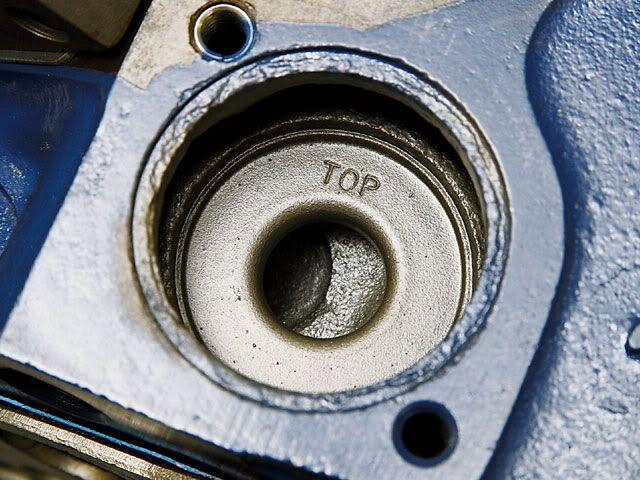- Joined
- Feb 28, 2011
- Messages
- 257
- Reaction score
- 6
- Location
- California
- My Car
- 1971 Mach 1
2000 F250-SD
2001 H-D FLTR
2004 GMC Denali
I have a 1971 Mach 1, 351c 2V motor. The car recently overheated, and was expelling coolant out of the over flow tube. I have had the car for two years, without any overheating problems prior to this.
I inspected the oil and it looks fine, and no moisture out of the tail pipes after warm up. I removed and inspected all of the spark plugs, to see if the had a washed out look. All looked find. Leading me to believe it is not a head gasket.
I first checked the thermostat, only to find the previous owner had removed the thermostat, as well as the water restrictor plate.
I have done the following.
Checked the quality of the oil and it looks fine.
No moisture from tail pipes after warm up.
Purchased and installed the water restrictor plate offered by west coast classic cougars, along with a 180 thermostat for a Windsor motor. (a non Cleveland thermostat is required with this restrictor plate)
Removed and replaced water pump. Verifying no play in shaft and no internal damage.
Had the radiator serviced.
New upper, lower, and heater hoses.
I have drilled a 1/16" hole into the thermostat, installed the thermostat while leaving the upper hose disconnected. I then added water until I could see water coming out of the thermostat housing. I did this to verify I did not have an air pocket at the thermostat.
I then connected the upper hose to the thermostat housing. I filled the upper hose with water before attaching it to the radiator. Again trying to eliminate any air pockets.
At this time, the car is overheating within five minutes of start up, at an idle. The factory gauge is in the middle of the operating temperature range. However, the engine begins to emit a knocking sound that I'm associating with over heating.
With the thermostat OUT, and the restrictor plate installed, I can see coolant flowing through the radiator. When I increase the rpm's the coolant flows even more.
With the thermostat INSTALLED, along with the restrictor plate, I see no coolant flow in the radiator, and I get the overheating as described above within a few minutes. The coolant drops several inches in the radiator, then rises and spills out of the radiator.
Any help is appreciated.
I filled the radiator last night, and checked it this morning while cold. The water level is within an inch or so from top of radiator.
Could anyone explain or help solve the problem of no water flow with the thermostat installed
thanks,
I inspected the oil and it looks fine, and no moisture out of the tail pipes after warm up. I removed and inspected all of the spark plugs, to see if the had a washed out look. All looked find. Leading me to believe it is not a head gasket.
I first checked the thermostat, only to find the previous owner had removed the thermostat, as well as the water restrictor plate.
I have done the following.
Checked the quality of the oil and it looks fine.
No moisture from tail pipes after warm up.
Purchased and installed the water restrictor plate offered by west coast classic cougars, along with a 180 thermostat for a Windsor motor. (a non Cleveland thermostat is required with this restrictor plate)
Removed and replaced water pump. Verifying no play in shaft and no internal damage.
Had the radiator serviced.
New upper, lower, and heater hoses.
I have drilled a 1/16" hole into the thermostat, installed the thermostat while leaving the upper hose disconnected. I then added water until I could see water coming out of the thermostat housing. I did this to verify I did not have an air pocket at the thermostat.
I then connected the upper hose to the thermostat housing. I filled the upper hose with water before attaching it to the radiator. Again trying to eliminate any air pockets.
At this time, the car is overheating within five minutes of start up, at an idle. The factory gauge is in the middle of the operating temperature range. However, the engine begins to emit a knocking sound that I'm associating with over heating.
With the thermostat OUT, and the restrictor plate installed, I can see coolant flowing through the radiator. When I increase the rpm's the coolant flows even more.
With the thermostat INSTALLED, along with the restrictor plate, I see no coolant flow in the radiator, and I get the overheating as described above within a few minutes. The coolant drops several inches in the radiator, then rises and spills out of the radiator.
Any help is appreciated.
I filled the radiator last night, and checked it this morning while cold. The water level is within an inch or so from top of radiator.
Could anyone explain or help solve the problem of no water flow with the thermostat installed
thanks,






















































